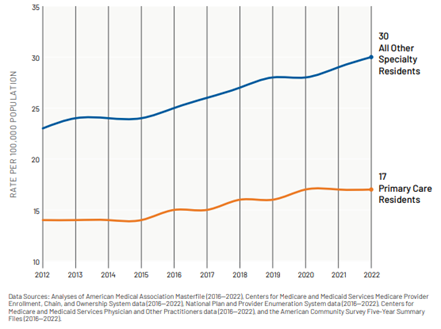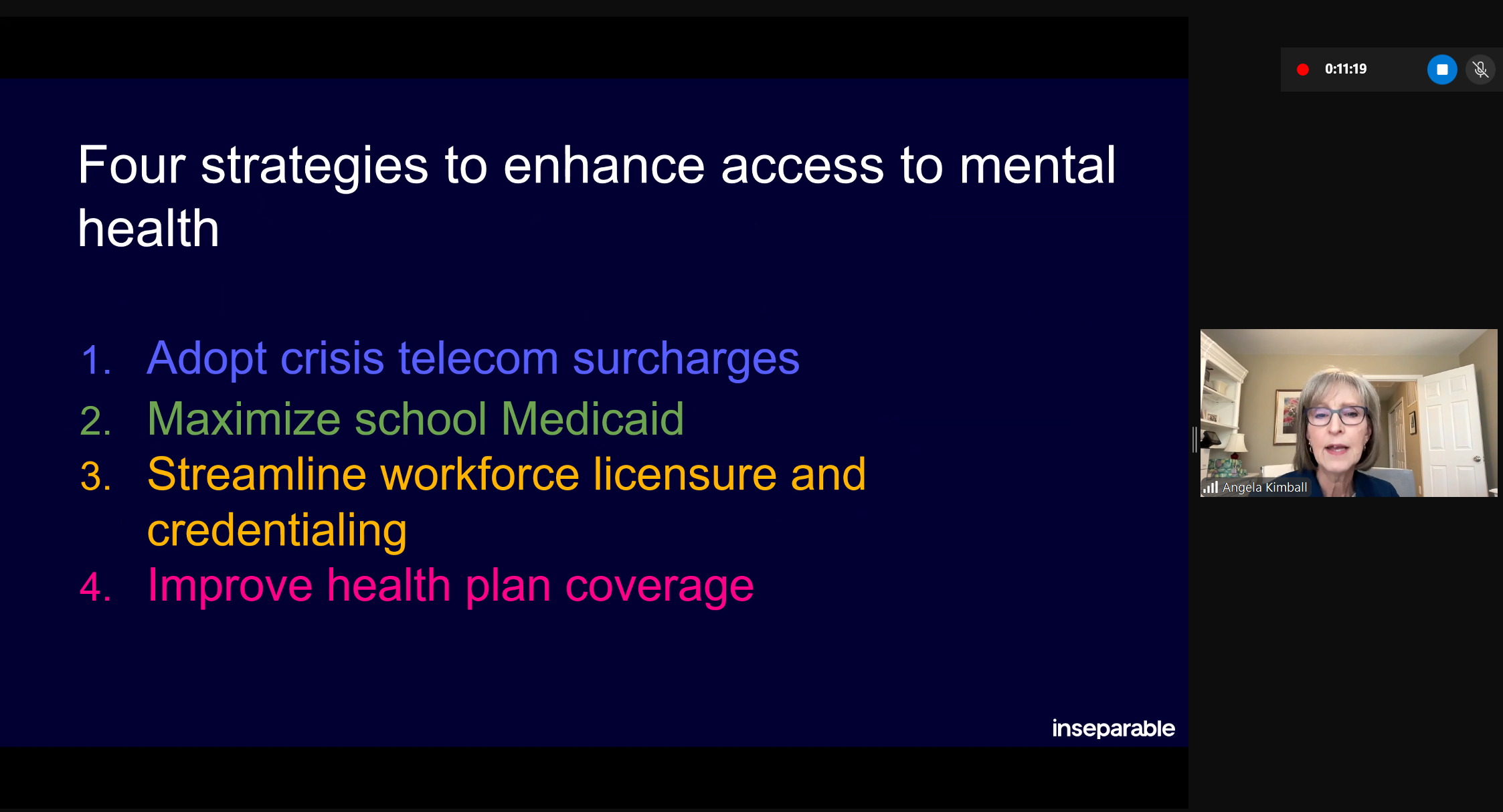Topline
Through prudent fiscal management and due to fundamental strengths in the broader economy, states and territories have so far averted the worst-case scenarios in cuts to their workforces and the vital services they provide to Americans. But a stalling recovery, and more contagious strains of the coronavirus, pose additional challenges to states and territories even as they take on new expenses to help hard-hit individuals and businesses. A strong national economy depends on strong states and territories.
Key Takeaways
“The picture, though rosier, is not rosy in the least”
–Moody’s, Jan. 21, 2021
Observing state revenues for the calendar year 2020 can be misleading and may give the false impression that revenues have not fallen significantly.
Deep Dive
➡ While state tax receipts performed better than expected in 2020, tax revenue is only one piece of the picture. The short- and long-term picture is less pessimistic than assumed several months ago, but state economies are not out of the woods.
➡ The outlook for state revenues remains fragile and uncertain. There is a lot we still don’t know about FY 2021 tax receipts.
- Observing state revenues for the calendar year 2020 can be misleading and may give the false impression that revenues have not fallen significantly. Tax collections from individuals and businesses are often delayed, creating a lag between changes in economic activity and changes in inflows. For most states, the first half of calendar year 2020 (second half of FY 2020) may have seen relatively unaffected revenues since the impacts of the pandemic were pushed into the second half of the year (first half of FY 2021), especially given tax filing extensions and deferred consumer activity due to store closures.
- State tax collections almost always lag economic downturns. (For example, the Great Recession ended in June 2009 but revenues did not recover until FY 2011 in nominal terms and FY 2018 in inflation-adjusted terms.)
- Revenue declines are even more serious when comparing to pre‑pandemic projections for FY 2021 (rather than just comparing to already-depressed FY 2020 revenues). A late 2020 NASBO fiscal survey estimates FY 2021 revenues will be 4.4 percent lower than FY 2020 but 10.8 percent lower than pre-pandemic projections. State budgets were based largely on those pre-pandemic projections.
➡ Previous federal stimulus efforts prevented the worst impacts of the recession on state economies. Now is not the time to pull back on these vital stimulus dollars.
- Even despite serious revenue declines, revenues would have declined even more had it not been for CARES Act support (PPP, enhanced unemployment, etc.). The stimulus worked to prevent the bottom falling out on state revenues; if stimulus is drawn down too soon, significant revenue losses will likely occur in FY 2021, FY 2022 and beyond.
➡ The path to national economic recovery runs through state economies.
➡ Significant challenges remain for state fiscal stability, including economic and public health uncertainty, ongoing expenditure pressure, and uneven economic recovery.
“…many states are still seeing budget gaps, given higher COVID-19 expenditures…”
-J.P. Morgan, Municipal Markets Weekly Jan. 29, 2021
Policymakers cannot ignore the costs states and local governments are incurring as they battle the public health emergency, nor can they ignore increased state spending targeted to people and businesses struggling due to the pandemic.
Deep Dive
➡Revenue data is only one piece of a very complicated picture. The pandemic continues to drive costs at the state level.
➡These state support programs will likely be needed for the foreseeable future.
➡States are spending limited revenues on unforeseen expenses, such as small business support and assistance for individuals affected by the pandemic.
➡Medicaid enrollment grew by nearly 6 million nationally since the start of the COVID-19 pandemic. Experts agree that the increased costs due to this increase in enrollment have not yet been fully realized and will hit state budgets in 2021.
➡Per Bloomberg Government:
- “Colorado provided $375 stimulus checks for some residents and lawmakers are considering other one-time measures like financing infrastructure projects.”
- “Minnesota lawmakers were among the first to act. In December, they passed a $216 million relief package that includes direct payments to restaurants, bars and gyms. The state’s revenue department said that it helped nearly 3,900 businesses though the middle of this month.”
- “South Carolina Governor Henry McMaster, a Republican, is incorporating small business relief as part of a budget proposal released this month that would provide $123 million in grants to supplement federal aid.”
➡Maryland’s senate unanimously approved $1.5 billion in pandemic relief that includes direct payments of up to $750 to families and $450 for individuals.
➡In addition to increased costs, state budgets remain fragile because some states and municipalities have had to turn to deficit financing to close budget gaps. A slight shift in market expectations could lead to an unsustainable debt buildup; rating agencies may be underestimating the risk.
- One analysis (Fabian & Washburn, Municipal Market Analytics) estimates that at least one-quarter (and as much as one-half) of municipal bond issuances between August and mid-December 2020 were used to cover government expenses (i.e. deficit financing) rather than to raise funds for, say, a long-term infrastructure project (what the municipal bond market is typically used for).
- So far, the impact of this borrowing on credit ratings has been minimal because credit rating agencies have treated this borrowing as a one-off response to an unprecedented crisis. In addition, rating agencies don’t yet have full information on state and local government finances for FY 2021. Expectations could deteriorate quickly once the picture clarifies.
The economic recovery remains fragile, underscoring the need for further stimulus and further support for state and local governments.
States and territories are key drivers of economic activity. According to the National Association of State Budget Officers (NASBO), total spending by state and local governments was $3.1 trillion in 2019, 14.7 percent of U.S. gross domestic product. Spending reductions due to budgetary shortfalls could ripple through the national economy.
Deep Dive
➡Federal Reserve Chair Jay Powell recently reminded Americans that “we are a long way from a full recovery.” He added, “The risks are in the near term, frankly. It’s the rollout of the vaccine, it’s the new strains which are more contagious, it’s the continued spread of the virus.”
➡After a bounceback in the third quarter of 2020, the U.S. economic recovery slowed considerably in the fourth quarter, growing just 4.0 percent (annualized). Consensus forecasts for Q1 2021 growth (generally ranging from 2.0-2.5 percent annualized) show the recovery is likely to slow further.
➡As a major virus wave hit the United States this winter, high frequency economic data revealed an immediate hit to consumer spending and economic activity. Any further deterioration in the health situation, including the spread of new virus strains, will further threaten an already fragile economic outlook.
➡The BLS Employment Report released last Friday (Feb. 5) was disappointing. Although the unemployment rate ticked down, only 49,000 jobs were added in January 2021, and revisions showed even greater job losses (-227,000) in December. The jobs recovery has stalled; at this rate, the U.S. labor market would not fully heal for 16 years. A weak labor market has led nearly 4.3 million Americans to drop out of the labor force.
States took actions throughout 2020 that prevented larger deficits but deeper cuts or spending reductions will further slow the broader economic recovery.
Already, state and local government spending cuts are dragging on the recovery. According to the Bureau of Economic Analysis 2020 GDP estimate, state and local government spending fell 0.9 percent in 2020. The decline shaved two tenths of a percentage point off GDP growth in the fourth quarter. (Instead of growing 4.2 percent [annualized] if state and local spending had remained flat, GDP grew only 4.0 percent [annualized]).
Deep Dive
➡Per NASBO 2020 Fiscal Survey: “19 states reported making net mid-year budget cuts in FY20 due to a revenue shortfall, and 10 states reported already reducing their originally enacted budgets for FY21 due to a shortfall, despite data being collected very early in the fiscal year.”
➡According to S&P, 11 states are beginning 2021 with a negative outlook, and six states are grappling with a 10 percent or greater reduction in tax revenues.
➡States and territories are major employers. In February 2020, nearly 20 million Americans were employed by state and local governments. As of January 2021, more than 1.3 million state and local jobs have been lost. This amounts to a 6.7 percent decline in state and local government employment – slightly greater than the 6.5 percent decline in total nonfarm employment in the United States. Additional layoffs would add to the already worrisome employment picture and would increase state unemployment insurance costs.
➡States and territories are key drivers of economic activity. According to the National Association of State Budget Officers (NASBO), total spending by state and local governments was $3.1 trillion in 2019, 14.7 percent of U.S. gross domestic product. Spending reductions due to budgetary shortfalls could ripple through the national economy.
The path to national economic recovery runs through state economies.
Treasury Secretary Janet Yellen reiterated this during her Senate confirmation hearing earlier this month, stating that job losses and revenue declines for state governments created a “tremendous drag on the economy” while the nation was recovering from the 2008 recession and warned that would recur in 2021 and beyond.
Deep Dive
➡State fiscal health is closely tied to national economic health. Struggling state economies will act as a drag on the national economic recovery.
➡The CARES Act focused on emergency relief from the immediate crisis; later rounds of stimulus should target measures that pave the way for recovery. State fiscal support is a key component of that goal.
- According to a recent CRS Report “State and Local Fiscal Conditions and COVID19: Lessons from the Great Recession and Current Projections” (December 2020): Federal COVID-19 stimulus efforts have two primary objectives: 1) emergency relief for households and businesses from the immediate health, employment and income consequences of the pandemic and 2) stimulating aggregate demand (traditional fiscal policy response) to pull the broader economy out of recession.
- “Aid to state and local governments and extensions of enhanced unemployment benefits would serve the dual purposes of providing both relief (particularly in light of the surge in cases) and a traditional stimulus” (p. 9).
- The same applies in reverse. A failure to provide necessary support to state and local governments may force both direct layoffs and cuts to essential services as well as reduced general spending that will weigh on GDP growth.
➡Aid to state and local governments is more effective at lifting aggregate demand and raising GDP than most other forms of stimulus, including business tax incentives, hiring incentives, individual tax rate cuts and small business assistance.
- CRS Report “Fiscal Policy Considerations for the Next Recession” (June 2019): Different forms of stimulus have different “fiscal multipliers,” the dollar amount of increase in aggregate demand for each stimulus dollar spent. Empirical evidence from the last recession shows that aid to state and local governments is associated with a high multiplier – similar to infrastructure spending, and second only to direct cash transfers to individuals.
- A September 2020 report by the Congressional Budget Office examining the cumulative impacts of last summer’s pandemic-related legislation on output through 2023 found direct assistance to state and local governments had the highest return on the dollar of any form of aid: 88 cents per dollar of deficit compared to 60 cents for direct payments to individuals, 67 cents for enhanced unemployment compensation, and 36 cents for small business aid (see Table 3 on page 6 of the report).
Prepared by:
- Emma Cimino, Senior Policy Analyst, NGA Center for Best Practices
- Susie Perez Quinn, Director, NGA Government Relations












